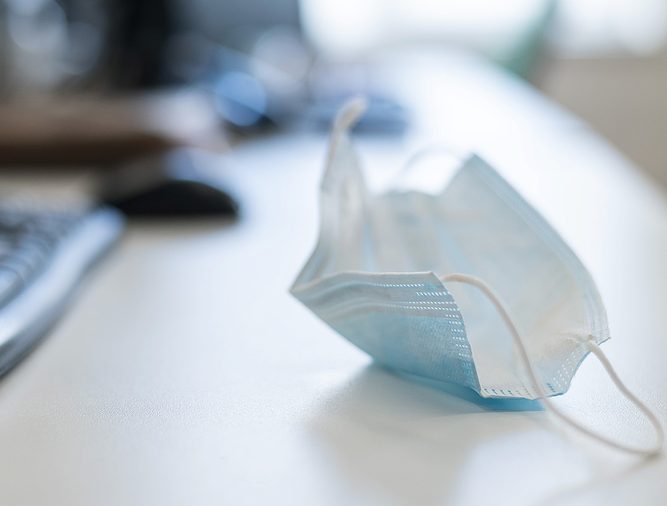Legal advice: Don't skip your daily pre-screening for employees coming into work.

Businesses across industries are cautiously starting to reopen. They are hoping that their customers and employees will return, and taking great pains to ensure a clean and safe environment. Diligent pre-screening of employees before the start of each work shift reduces the possibility of infection in the place of business. It's not only safe, it's required. Here's today's legal advice.
In this Episode
In this Member Question of the Day episode, I'm joined by Don Lawless, partner in the Grand Rapids office of Barnes & Thornburg. Don explains the obligations and expectations for employers to continue to pre-screen employees for work, per covid-19 guidelines. He emphasizes that whether you're a farm or a restaurant or a manufacturer, pre-screening is non-negotiable.
Employee Pre-Screening for Work Protocols
Michigan's Executive Order 2020-114 gives specific protocols for what employers must to in order to reopen. It includes requirements of a preparedness plan and diligent safety practices. Here's bullet point number one in that EO.
All businesses or operations that require their employees to leave the homes or residences for work must, at a minimum:
-
- Develop a COVID-19 preparedness and response plan, consistent with recommendations in Guidance on Preparing Workplaces for COVID-19, developed by the Occupational Health and Safety Administration (“OSHA”) and available here. Within two weeks of resuming in-person activities, a business’s or operation’s plan must be made readily available to employees, labor unions, and customers, whether via website, internal network, or by hard copy.
- Designate one or more worksite supervisors to implement, monitor, and report on the COVID-19 control strategies developed under subsection (a). The supervisor must remain on-site at all times when employees are present on site. An on-site employee may be designated to perform the supervisory role.
- Provide COVID-19 training to employees that covers, at a minimum:
- Workplace infection-control practices.
- The proper use of personal protective equipment.
- Steps the employee must take to notify the business or operation of any symptoms of COVID-19 or a suspected or confirmed diagnosis of COVID-19.
- How to report unsafe working conditions.
- Conduct a daily entry self-screening protocol for all employees or contractors entering the workplace, including, at a minimum, a questionnaire covering symptoms and suspected or confirmed exposure to people with possible COVID-19.
- Keep everyone on the worksite premises at least six feet from one another to the maximum extent possible, including through the use of ground markings, signs, and physical barriers, as appropriate to the worksite.
- Provide non-medical grade face coverings to their employees, with supplies of N95 masks and surgical masks reserved, for now, for health care professionals, first responders (e.g., police officers, fire fighters, paramedics), and other critical workers.
- Require face coverings to be worn when employees cannot consistently maintain six feet of separation from other individuals in the workplace, and consider face shields when employees cannot consistently maintain three feet of separation from other individuals in the workplace.
- Increase facility cleaning and disinfection to limit exposure to COVID-19, especially on high-touch surfaces (e.g., door handles), paying special attention to parts, products, and shared equipment (e.g., tools, machinery, vehicles).
- Adopt protocols to clean and disinfect the facility in the event of a positive COVID-19 case in the workplace.
- Make cleaning supplies available to employees upon entry and at the worksite and provide time for employees to wash hands frequently or to use hand sanitizer.
- When an employee is identified with a confirmed case of COVID-19:
- Immediately notify the local public health department, and
- Within 24 hours, notify any co-workers, contractors, or suppliers who may have come into contact with the person with a confirmed case of COVID-19.
- An employer will allow employees with a confirmed or suspected case of COVID-19 to return to the workplace only after they are no longer infectious according to the latest guidelines from the Centers for Disease Control and Prevention (“CDC”) and they are released from any quarantine or isolation by the local public health department.
- Follow Executive Order 2020-36, and any executive orders that follow it, that prohibit discharging, disciplining, or otherwise retaliating against employees who stay home or who leave work when they are at particular risk of infecting others with COVID-19.
- Establish a response plan for dealing with a confirmed infection in the workplace, including protocols for sending employees home and for temporary closures of all or part of the workplace to allow for deep cleaning.
- Restrict business-related travel for employees to essential travel only.
- Encourage employees to use personal protective equipment and hand sanitizer on public transportation.
- Promote remote work to the fullest extent possible.
- Adopt any additional infection-control measures that are reasonable in light of the work performed at the worksite and the rate of infection in the surrounding community.
